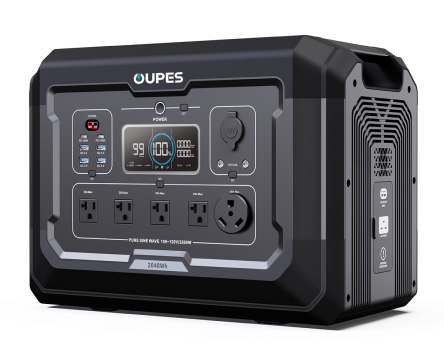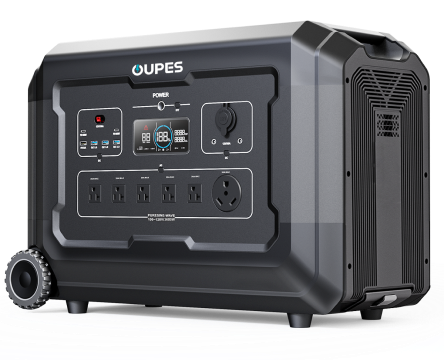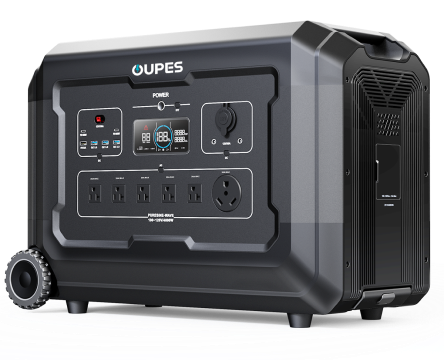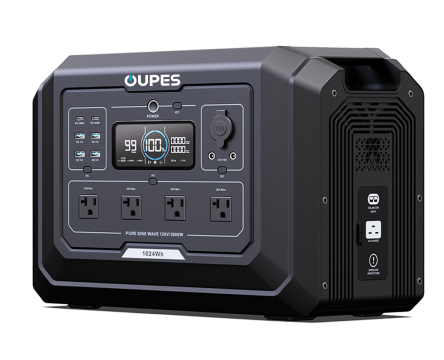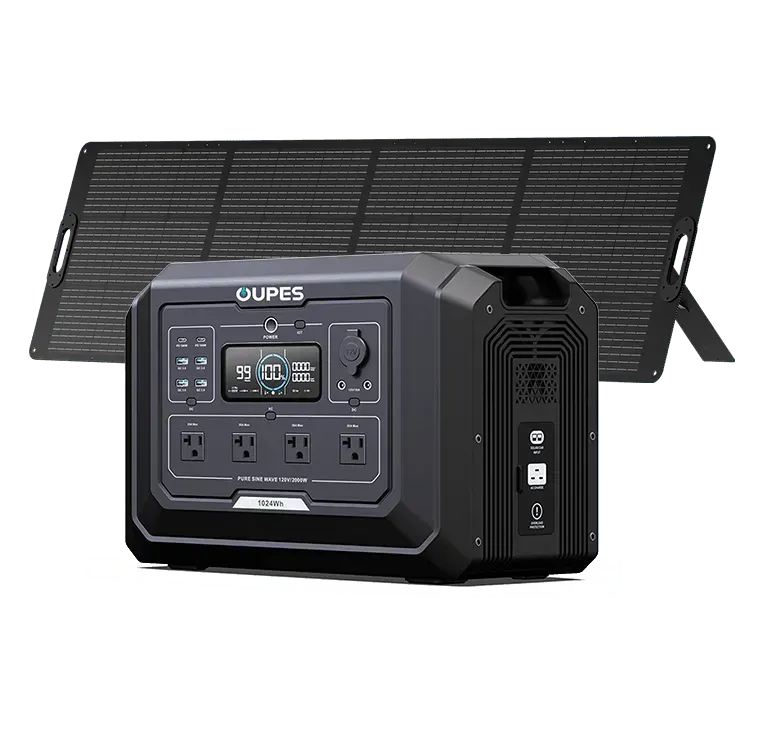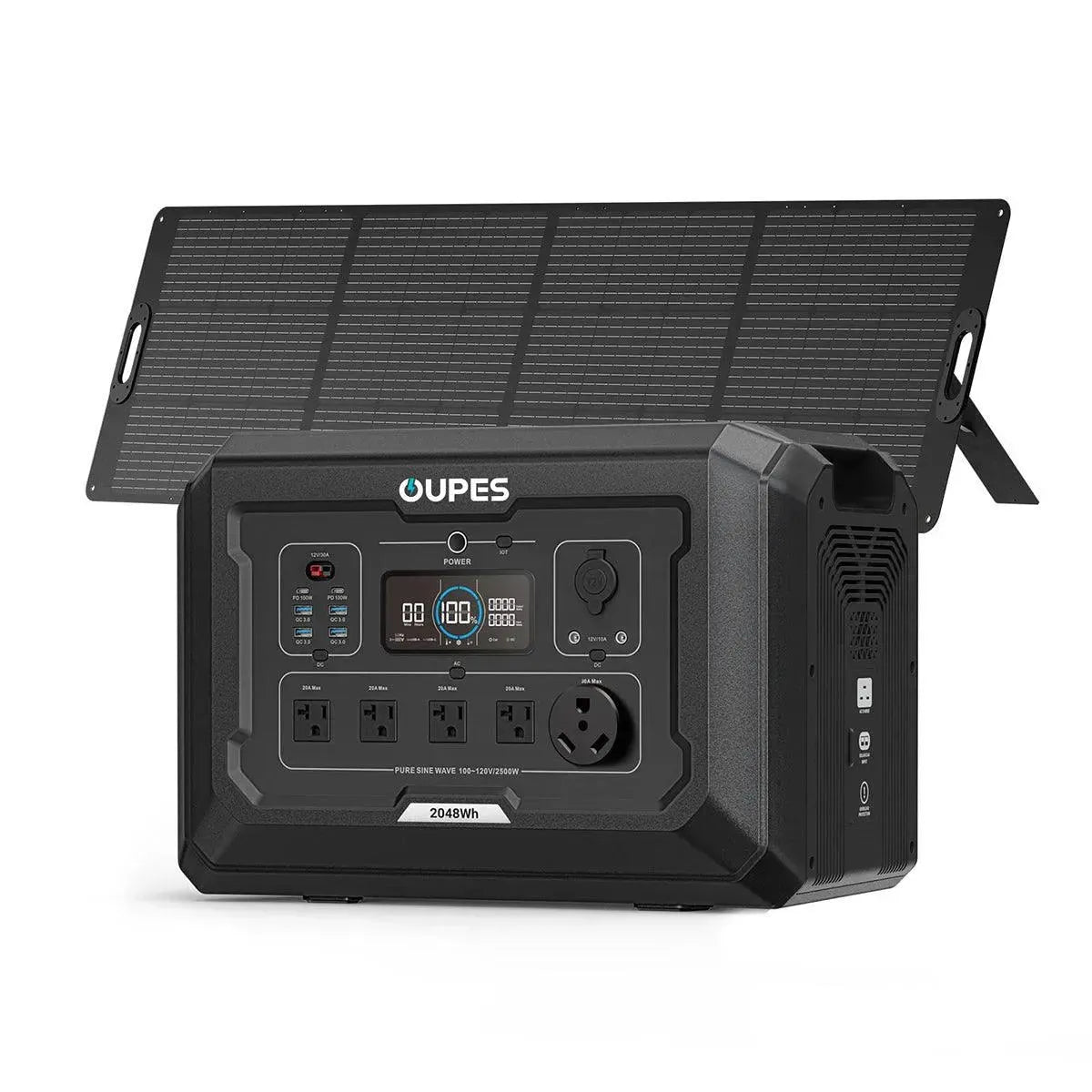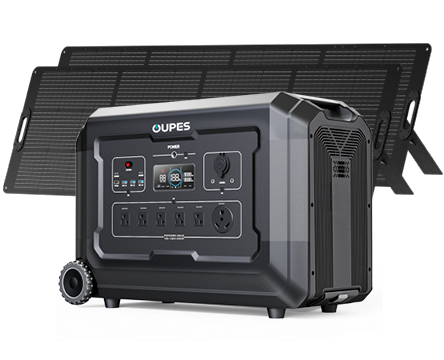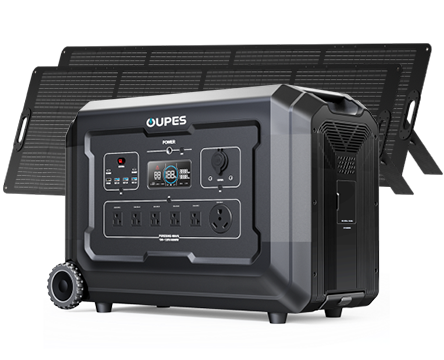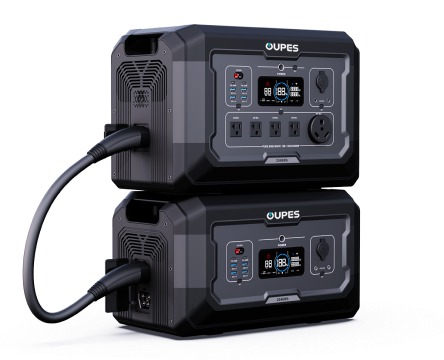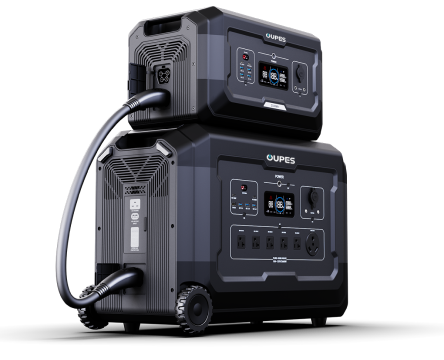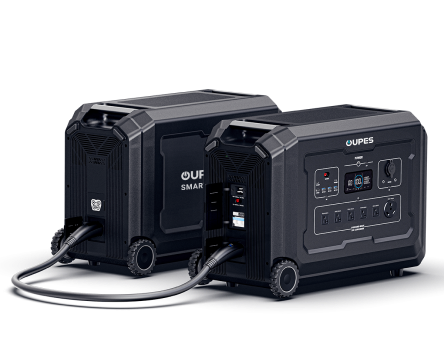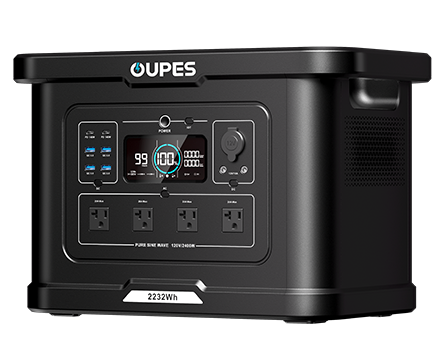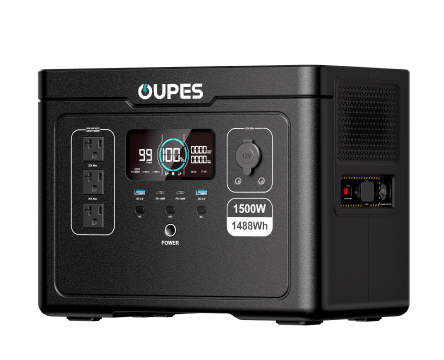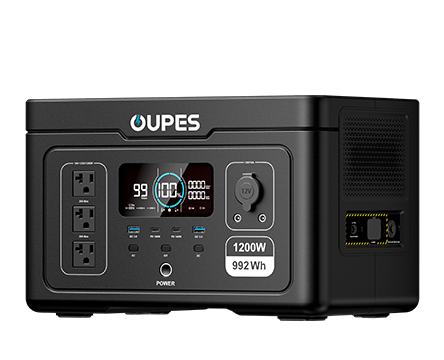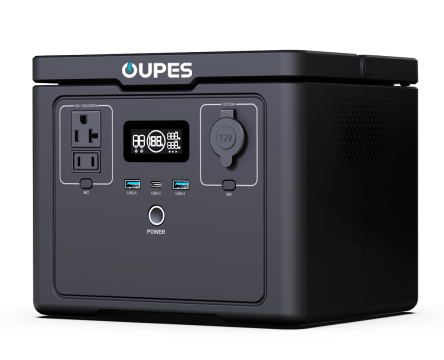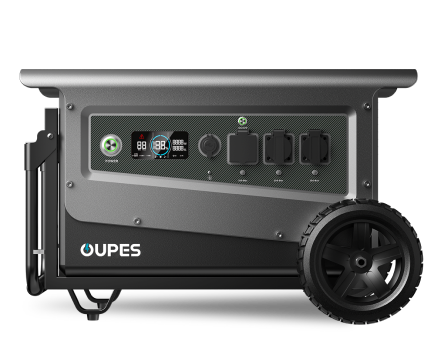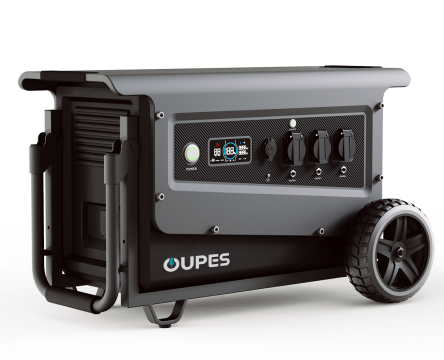Introduction: Why Off-Grid Power Matters
Camping off-grid offers a rare sense of freedom—no crowded campsites, no hookups, and complete independence from traditional power sources. But it also brings one challenge: how to get reliable electricity when you're away from the grid.
From powering lights, cooking appliances, and fans to charging smartphones, laptops, and cameras, having access to electricity makes the experience both comfortable and safe. The key is knowing what power sources are available and how to use them efficiently.
Different Ways to Get Power Off-Grid
There are several ways to supply electricity while camping off-grid. Each has advantages depending on your setup, duration, and energy needs. Let’s explore the main options.
1. Solar Power
Solar power is one of the most sustainable solutions for off-grid camping. Portable solar panels capture sunlight and convert it into electricity, which can then be stored in a power station or battery pack for later use.
2. Portable Power Stations
These are compact, all-in-one devices combining an inverter, battery, and charging controller. They can charge through AC, DC, or solar input and power everything from phones to small kitchen appliances. Modern designs, such as those from OUPES, use LiFePO4 batteries for longer lifespan and stability.
3. Gas or Propane Generators
Traditional fuel generators can supply high wattage instantly but require fuel and emit noise and fumes. They’re often used as backup sources or during long stays where solar alone isn’t sufficient.
4. Vehicle Power
You can draw limited power from your car’s 12V outlet to charge devices. While convenient, this method shouldn’t be your primary source since it can drain the car battery if not managed properly.
5. Hybrid Setups
Many campers now combine solar, battery, and generator systems for flexible and resilient off-grid power. For example, solar panels recharge the battery during the day, while a small generator or vehicle alternator supplements it during cloudy weather.
Solar Generators and Portable Power Stations
Solar generators and portable power stations are becoming the go-to solution for off-grid campers. They’re clean, quiet, and easy to maintain. Let’s look at how they work and why they’re ideal for camping.
How They Work
A solar generator system typically includes:
- Solar panels to capture sunlight.
- Charge controller to regulate voltage and prevent overcharging.
- Battery to store energy for nighttime or cloudy use.
- Inverter to convert DC to AC power for standard appliances.
When paired with a portable power station, you can run most essential devices — lights, fans, coolers, and even coffee makers — completely off-grid.
Advantages of Solar Power for Camping
- Silent and emission-free operation.
- Rechargeable anywhere with sunlight.
- Safe for enclosed spaces (no exhaust fumes).
- Minimal maintenance compared to fuel-based systems.
Limitations
- Performance depends on weather and sunlight availability.
- Initial setup can cost more than fuel-based options.
- Charging large devices may require multiple panels.
Using Deep Cycle or Portable Batteries
If you already have solar panels or want to store extra energy, deep-cycle batteries (AGM, Gel, or LiFePO4) are a great option. They provide steady power output for long periods and are ideal for RV setups or extended camping trips.
Why Battery Type Matters
The type of battery you use determines not only how much energy you can store but also how safely and efficiently it delivers that energy. LiFePO4 batteries, for instance, can handle thousands of cycles and operate safely in various temperatures.
How to Size Your Battery
Estimate your daily energy use in watt-hours (Wh). For example, if you consume about 500Wh per day, a 1000Wh battery gives you a two-day buffer before needing to recharge.
Gas or Propane Generators: Pros and Cons
Fuel-based generators remain popular for heavy-duty or extended off-grid stays. However, they come with trade-offs.
| Feature | Advantages | Disadvantages |
|---|---|---|
| Power Output | Can run large appliances easily | Requires regular fuel supply |
| Portability | Compact models available | Heavier and bulkier than solar |
| Noise & Emissions | None (for electric models) | Produces fumes and noise |
| Maintenance | Durable with proper care | Needs oil changes and cleaning |
While gas generators deliver raw power, portable solar systems are now efficient enough to replace them for most camping situations.
Comparison of Off-Grid Power Options
| Power Source | Noise Level | Fuel Required | Ideal Use | Environmental Impact |
|---|---|---|---|---|
| Solar Generator | Silent | No | Long-term off-grid | Very Low |
| Gas Generator | Loud | Yes | High power demand | High |
| Portable Battery | Silent | No | Short trips | Low |
| Vehicle Power | Low | Yes (vehicle fuel) | Emergency charging | Moderate |
Estimating Your Power Needs While Camping
Understanding your power needs helps you choose the right equipment. Start by listing the devices you plan to use and their power ratings.
| Device | Power (W) | Usage (hours/day) | Daily Consumption (Wh) |
|---|---|---|---|
| LED Light | 10W | 5h | 50Wh |
| Phone Charger | 15W | 2h | 30Wh |
| Mini Fridge | 60W | 8h | 480Wh |
| Laptop | 60W | 3h | 180Wh |
| Total | - | - | ~740Wh/day |
A 1000Wh portable power station would easily cover this demand, with extra capacity for cloudy days.
How to Connect and Manage Devices
Portable power stations come with multiple output ports: AC, DC, USB-A, USB-C, and car outlets. This makes it easy to connect different devices simultaneously.
- Use DC outputs for higher efficiency when possible.
- Avoid daisy-chaining high-power devices on a single outlet.
- Monitor power draw through the LCD display or mobile app if available.
How to Extend Your Off-Grid Power Supply
1. Optimize Charging Times
Charge your power station during peak sunlight hours (10 AM – 3 PM). Tilt your solar panels toward the sun for maximum efficiency.
2. Manage Power Usage
Turn off non-essential appliances at night, and use energy-efficient lighting such as LED bulbs.
3. Add Extra Batteries or Panels
Many systems allow expansion. Adding an extra solar panel or battery pack can double your runtime without much extra weight.
4. Use Smart Monitoring Tools
Some modern power stations, including those from OUPES, offer real-time power tracking through apps. Monitoring helps you plan energy use effectively during longer trips.
Choosing the Right Portable Power Station
When selecting a power station for camping, look for these key specifications:
- Battery capacity (Wh): Determines total runtime.
- Output power (W): Must exceed your largest device’s power draw.
- Input flexibility: Support for AC, car, and solar charging.
- Battery type: LiFePO4 offers longer life and safety.
- Port variety: Multiple output ports let you run various devices at once.
Safety Tips for Off-Grid Power Use
- Keep power stations and batteries dry and shaded from direct sunlight.
- Do not overload outlets beyond rated power limits.
- Store batteries between 50–80% charge for long-term preservation.
- Ensure ventilation around gas generators to avoid carbon monoxide buildup.
FAQ
1. What is the best way to get power when camping off-grid?
A solar generator paired with a portable power station is the most efficient, quiet, and sustainable solution for off-grid camping.
2. How long can a power station last on one charge?
That depends on its capacity and your usage. For example, a 1000Wh station can typically power small devices for 1–2 days.
3. Can I charge my power station with solar panels and a car at the same time?
Yes, many power stations support dual charging for faster recharging times — ideal for extended trips.
4. What size solar panel do I need for camping?
A 100–200W solar panel is sufficient for most campers who only need to charge electronics and small appliances daily.
5. Are portable power stations safe to use inside tents?
Yes. Unlike gas generators, solar-based power stations produce no fumes and operate silently, making them safe for indoor use.
6. How do I know what size power station I need?
Add up your devices’ daily energy use (in Wh). Choose a power station with at least 20–30% higher capacity for safety margin.
7. Can solar power run a refrigerator while camping?
Yes, but you’ll need a power station with at least 1000–1500Wh capacity and a 200W solar setup for consistent operation.
8. What happens on cloudy days?
Use stored battery energy or a small backup generator. Combining solar and battery power ensures consistent performance even in low-sunlight conditions.

